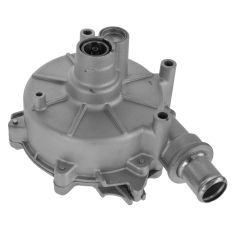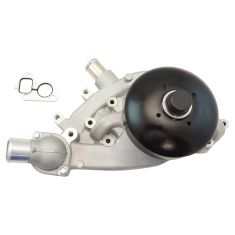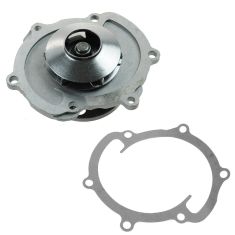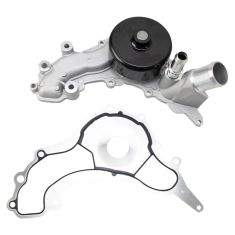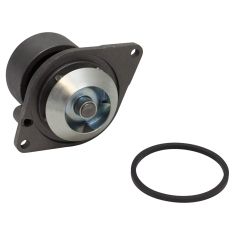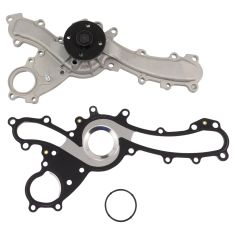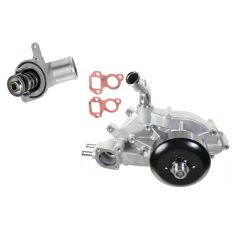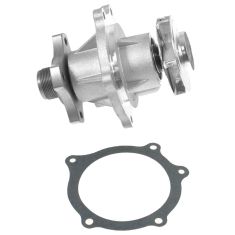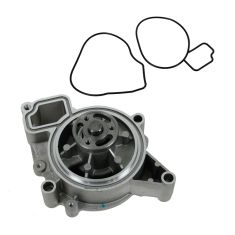Water Pump & Related
-
-
- Air Deflectors & Valance Panels
- Battery Trays & Related
- Body Panels
- Bumpers & Related - Front & Rear
- Convertible Tops, Soft Tops, & Parts
- Decal & Stripe Kits
- Emblems & Nameplates
- Engine Compartment Trim
- Frame Parts & Bushings
- Fuel Door Parts
- Fuel Tank Filler Neck
- Grille
- Header Panel
- Hood & Hatch Lift Supports
- Hood Latch & Catch Brackets
- Hood Release Cable
- Jack Pads
- Radiator Supports
- Rust Repair Panels
- Splash Shields & Fender Liners
- Tailgate Cables
- Tailgate Hinges & Related
- Weatherstripping
-
- Car Covers
- Exterior Lighting
- Exterior Parts & Accessories
- Exterior Safety & Security
- Exterior Storage
- Fender Flares
- License Plate Brackets & Frames
- Mud Flaps & Splash Guards
- Nerf Bars, Side Steps, Running Boards
- Radio Antenna
- Rain Deflectors
- Roll Bars, Light Bars, & Related
- Roof Rack
- Skid Plates
- Spare Tire Carriers & Related
- Spare Tire Covers
- Tire Care
- Tonneau Covers
- Tow Hooks & D-Shackles
- Towing Accessories
- Trailer Hitch & Components
-
- Accelerator Pedal Pad
- Auto Carpet
- Brake Pedal Pad
- Clutch Pedal Pad
- Console Parts
- Dash Pad Cover
- Dash Vents
- Floor Mats & Liners
- Horns & Horn Parts
- Interior Parts & Accessories
- Mirror - Interior Rear View
- Seat Cover and Sets
- Seat Heater Kits
- Seat Parts and Accessories
- Sun Visors & Related
- Trunk & Cargo Parts
-
- Accelerator Pedals & Sensors
- Alarms, Control Modules, & Remote Start
- Cruise Control Switch & Lever
- Electrical Parts
- Hazard Switch
- Ignition Key Lock Cylinder
- Ignition Switch
- Keyless Entry Remote & Related
- Neutral Safety Switch
- Parking Assist Cameras & Monitors
- Power Mirror Switch
- Power Seat Switches
- Power Window Switch
- Radio, Navigation, Entertainment
- Reverse Light Switch
- Trunk Release & Lock Solenoids
- Turn Signal Switches and Levers
- Windshield Wiper Switch
-
- Idler Arm
- Pitman Arm
- Power Steering Hoses
- Power Steering Oil Cooler
- Power Steering Pressure Sensor
- Power Steering Pump
- Power Steering Pump Cooling Fan
- Power Steering Pump Pulley
- Power Steering Pump Reservoir
- Steering Dampers
- Steering Knuckles and Spindles
- Steering Rack and Gear Boxes
- Steering Shafts & Couplers
- Steering Wheels & Column Parts
- Tie Rods & Adjusting Sleeves
-
-
-
-
-
-
332
34
10
10
-
Notify When Available$72.95Save 22%List $93.95 Save $21.00Brand: TRQ - WPA07389$72.95Save 22%List $93.95 Save $21.00
-
Notify When Available$154.95Save 12%List $175.95 Save $21.00
Replaces Engine Water Pump TRQ WPA07406
Brand: TRQ - WPA07406$154.95Save 12%List $175.95 Save $21.00 -
Notify When Available$49.95Save 18%List $60.95 Save $11.00
Replaces Engine Water Pump TRQ WPA07383
Brand: TRQ - WPA07383$49.95Save 18%List $60.95 Save $11.00 -
Notify When Available$89.95Save 26%List $120.95 Save $31.00Brand: TRQ - WPA92903$89.95Save 26%List $120.95 Save $31.00
-
Notify When Available$57.95Save 26%List $77.95 Save $20.00
Replaces Dodge Engine Water Pump TRQ WPA07407
Brand: TRQ - WPA07407$57.95Save 26%List $77.95 Save $20.00 -
Notify When Available$64.95Save 18%List $78.95 Save $14.00Brand: TRQ - WPA07353$64.95Save 18%List $78.95 Save $14.00
-
Notify When Available$69.95Save 25%List $92.95 Save $23.00Brand: TRQ - WPA07417$69.95Save 25%List $92.95 Save $23.00
-
Notify When Available$199.95Save 13%List $229.95 Save $30.00
Replaces Engine Water Pump TRQ WPA06894
Brand: TRQ - WPA06894$199.95Save 13%List $229.95 Save $30.00 -
Notify When Available$49.95Save 25%List $66.95 Save $17.00
Replaces Engine Water Pump TRQ WPA07351
Brand: TRQ - WPA07351$49.95Save 25%List $66.95 Save $17.00 -
Notify When Available$49.95Save 24%List $65.95 Save $16.00
Replaces Engine Water Pump TRQ WPA07370
Brand: TRQ - WPA07370$49.95Save 24%List $65.95 Save $16.00
loading...
Choose the Make of Your Vehicle
